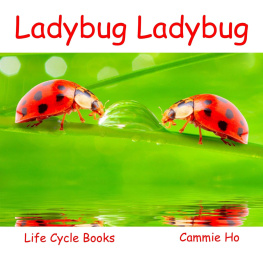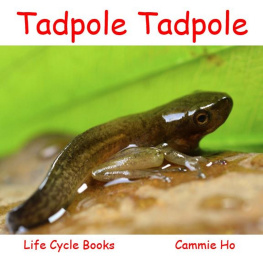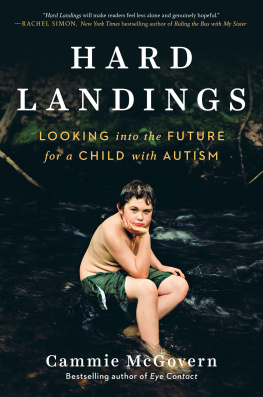OTHER TITLES IN THIS SERIES
American Appetites: A Documentary Reader
Edited by Jennifer Jensen Wallach and Lindsey R. Swindall
Dethroning the Deceitful Pork Chop: Rethinking African American Foodways from Slavery to Obama
Edited by Jennifer Jensen Wallach
Copyright 2016 by The University of Arkansas Press
All rights reserved
Manufactured in the United States of America
ISBN: 978-1-55728-691-8
e-ISBN: 978-1-61075-577-1
20 19 18 17 16 5 4 3 2 1
Designed by Liz Lester

The paper used in this publication meets the minimum requirements of the American National Standard for Permanence of Paper for Printed Library Materials Z39.48-1984.
Library of Congress Control Number: 2015948065
SUBSIDY CREDITS
We gratefully acknowledge the following support and permissions:
The University of ArkansasFort Smith for providing sabbatical support to Cammie M. Sublette during the completion of this project;
The University of Minnesota Press for allowing the republication of Kelly Erbys Between Bolted Beef and Bolted Pudding: Bostons Eating Houses and Nineteenth-Century Social and Cultural Change, a version of which appears in her book Restaurant Republic: The Rise of Public Dining in Boston (University of Minnesota Press).
Cover image: Erin Kirk New
Cammie M. Sublette
To my wonderful family, Len, Drew, Brody, Gavin,
and Clara. You all inspire me. And to my parents,
who have always nourished my spirit with their
unflagging love and support.
Jennifer Martin
To my mom, who allowed me to help in the kitchen
when I was so young I had to stand on a chair to reach
the counter, tolerated my messes when I was learning to
cook, instilled in me the knowledge that I could achieve my
dreams, and, then, lovingly supported me in my quests.
SERIES EDITORS PREFACE
The University of Arkansas Press series Food and Foodways explores historical and contemporary issues in global food studies. We are committed to telling lesser-known food stories and to representing a diverse set of voices. Our strength is works in the humanities and social sciences that use food as a lens to examine broader social, cultural, environmental, ethical, and economic issues. However, we recognize that foodperhaps the most central of all human concernsis not only a barometer by which to gauge social, cultural, and environmental conditions, it can also be a source of pleasure. In addition to scholarly books, we publish creative nonfiction that explores the sensory dimensions of consumption and celebrates food as evidence of human creativity and innovation.
The ten essays that comprise Devouring Cultures: Perspectives on Food, Power, and Identity from the Zombie Apocalypse to Downton Abbey, edited by Cammie M. Sublette and Jennifer Martin, offer a collective exploration of representations of food in American culture. The contributors demonstrate that the study of consumption habits and ideas about food can yield a unique set of insights into the process of American identity construction. The contributors analyze materializations of culture ranging from public restaurants to literature to television and film to reveal the manifold ways in which, as the editors of the volume argue, food communicates particulars of time, place, class, gender, race, trauma, agency, and ideology. This eclectic, rich, and thought-provoking collection fulfills the Food and Foodways series mission to explore understudied food stories as the authors search for and find food and meaning in a series of unexpected and intriguing places.
JENNIFER JENSEN WALLACH, Series Editor
ACKNOWLEDGMENTS
Creating a book is much like creating a delicious meal; it all hinges on the very finest and tastiest ingredients. We have been fortunate to find and collect here many exciting flavors to make a most enjoyable feast. It would not have been possible without many people along the way who helped make our recipe a reality. First, we are so appreciative of the brilliant scholars who added their knowledge and voices to our collection. It has been our pleasure to work with such talented researchers and writers. We also appreciate our editors at the University of Arkansas Press, who provided the guidance to bring the work from an assortment of interesting concepts to a book. Our sincere thanks also go to Jennifer Jensen Wallach, associate professor of history at the University of North Texas and the series editor for the University of Arkansas Press series Food and Foodways. Jennifers direction and encouragement as we worked on the project were invaluable. The Popular Culture Association/American Culture Association and the food panels at the annual conferences in San Antonio, Boston, and Washington, D.C., gave us the seed of the idea to begin the project, and our wonderful English Department at the University of ArkansasFort Smith provided us the creative freedom to pursue our research. We also appreciate our incredible UAFS students who have allowed us to test our food ideas in the classroom and made us look at food in ways we had never before considered. We are indebted to the University of Minnesota Press for allowing us to publish Kelly Erbys Between Bolted Beef and Bolted Pudding: Bostons Eating Houses and Nineteenth-Century Social and Cultural Change, a version of which also appears in her book Restaurant Republic: The Rise of Public Dining in Boston. Cammie would like to thank the University of ArkansasFort Smith and the University of Arkansas system for allowing her a sabbatical to complete the project, as well as Elizabeth Klaver and Bob Fox from Southern Illinois University and Ruth Ellen Porter from Jacksonville State University, who mentored her as an emerging scholar. Jennifer would like to thank Bob Jackson and Grant Jenkins from the University of Tulsa for their encouraging guidance and Kedar Padhye, who has patiently listened to endless talk about books and food with a smile on his face. We both would like to thank our families who have shared in our food adventures at many a mealtime. This is your book, too.
INTRODUCTION
American Self-Fashioning and Culinary Consumption
Each pale yellow wrapper has a picture on it. A picture of little Mary Jane, for whom the candy is named. Smiling white face. Blond hair in gentle disarray, blue eyes looking at her out of a world of clean comfort. The eyes are petulant, mischievous. To Pecola they are simply pretty. She eats the candy, and its sweetness is good. To eat the candy is somehow to eat the eyes, eat Mary Jane. Love Mary Jane. Be Mary Jane.
TONI MORRISON, The Bluest Eye
For humans, food is deeply invested with broad social meaning. While food has always represented the difference between starvation and life, between the possibility of establishing a flourishing civilization versus one plagued with death and suffering, food is also invested with deep personal meaning, with each meal potentially invoking elements of the political self, the moral self, the cultural self, and the aesthetic self. Our food preferences and aversions speak to how we see ourselves and how we wish to be seen, but also insinuate our desires to transform ourselves and the world around us. In Toni Morrisons



 The paper used in this publication meets the minimum requirements of the American National Standard for Permanence of Paper for Printed Library Materials Z39.48-1984.
The paper used in this publication meets the minimum requirements of the American National Standard for Permanence of Paper for Printed Library Materials Z39.48-1984.









